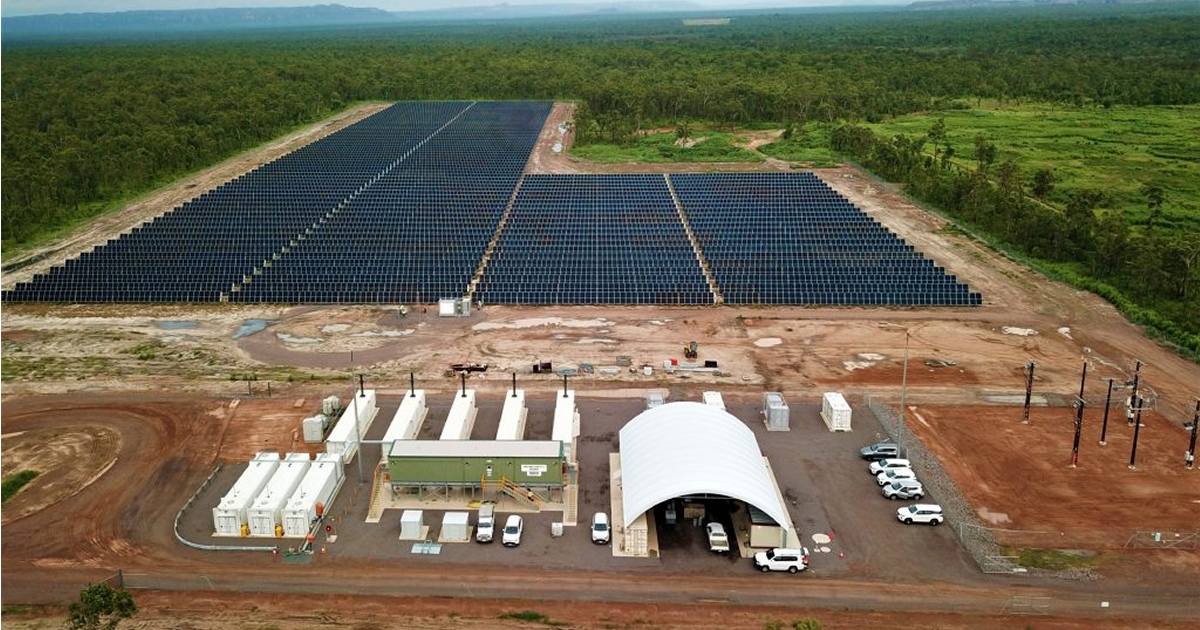A hybrid renewable power station in the Northern Territory is now providing a cleaner energy future for the town of Jabiru.
Situated in the midst of Kakadu National Park and considered the gateway to the World Heritage listed destination, Jabiru (population: ~1,000) was built in the 1980’s to service Energy Resources of Australia’s (ERA’s) Ranger uranium mine. The town was powered by diesel generators situated at the mine, and ERA ceasing operations at Ranger left Jabiru in a perilous position in terms of electricity supply – and its future in general.
But a Northern Territory Government $135.5 million investment in the town has given Jabiru a more certain future; one that will be partly powered by renewable energy.
Part of the Gunner Government’s investment is the Jabiru Hybrid Renewable Project, consisting of 4.5MW of diesel generation capacity, a 3.9MW solar farm and a 3MW/5MWh battery.
The company contracted to deliver the project, EDL, commenced site clearing and preparation with assistance from the Djurrubu Rangers in the middle of last year and construction started in earnest in early August. Less than 6 months on and the project is for all intents and purposes complete – final commissioning occurred this week.
“Jabiru is an iconic Territory town – the gateway to Kakadu National Park and the West Arnhem Region,” said NT Chief Minister Michael Gunner. “We are investing millions into Jabiru to transform it into the tourism and services hub we know it is well positioned to be. This new Power Station has helped create more jobs for locals, and it is paving the way for better and more reliable services for Territorians and businesses in Jabiru.”
Around 300 jobs for local Territorians, including the Djurrubu Rangers, were created during the construction phase.
It’s expected a least 50 per cent of the town’s electricity will come from solar power over the long-term.
NT Minister for Renewables and Energy Eva Lawler noted:
“We’ve seen in the last week or so when we’ve had a lot of sunshine and Jabiru has had 100 per cent of its electricity generated by renewables.”
Ranger Mine Rehabilitation Cost Blowout
On a related note, ERA, which is majority owned by Rio Tinto, recently announced the revised cost and scheduling of the Ranger mine’s rehabilitation. The cost has now doubled from previous forecasts to a new range from $1.6 billion to $2.2 billion.
ERA was required to complete all decommissioning and rehabilitation works by 2026, but such is the scale of the task that the company will need more time for it to be properly carried out. The revised date for completion is between late 2027 and late 2028. However, legislation needs to be passed at a federal level to allow for the extension.
“With all mining ceased at Kakadu forever, the world is now watching Australia to see if rehabilitation can be successfully secured,” said Gundjeihmi Aboriginal Corporation CEO, Justin O’Brien. “Many people are rightly concerned about the potential environmental impact that this rehabilitation project is having on the World Heritage listed Kakadu National Park”.
Uranium ore processing occurred at Ranger for more than 40 years. It produced more than 132,000 tonnes of yellowcake during its life, which will be around in one form or another for a very, very long time to come.
Uranium mining on the land was opposed by its traditional owners, the Mirarr people. You can learn more about the problematic history of uranium mining in the Kakadu region here.


 RSS - Posts
RSS - Posts



Speak Your Mind